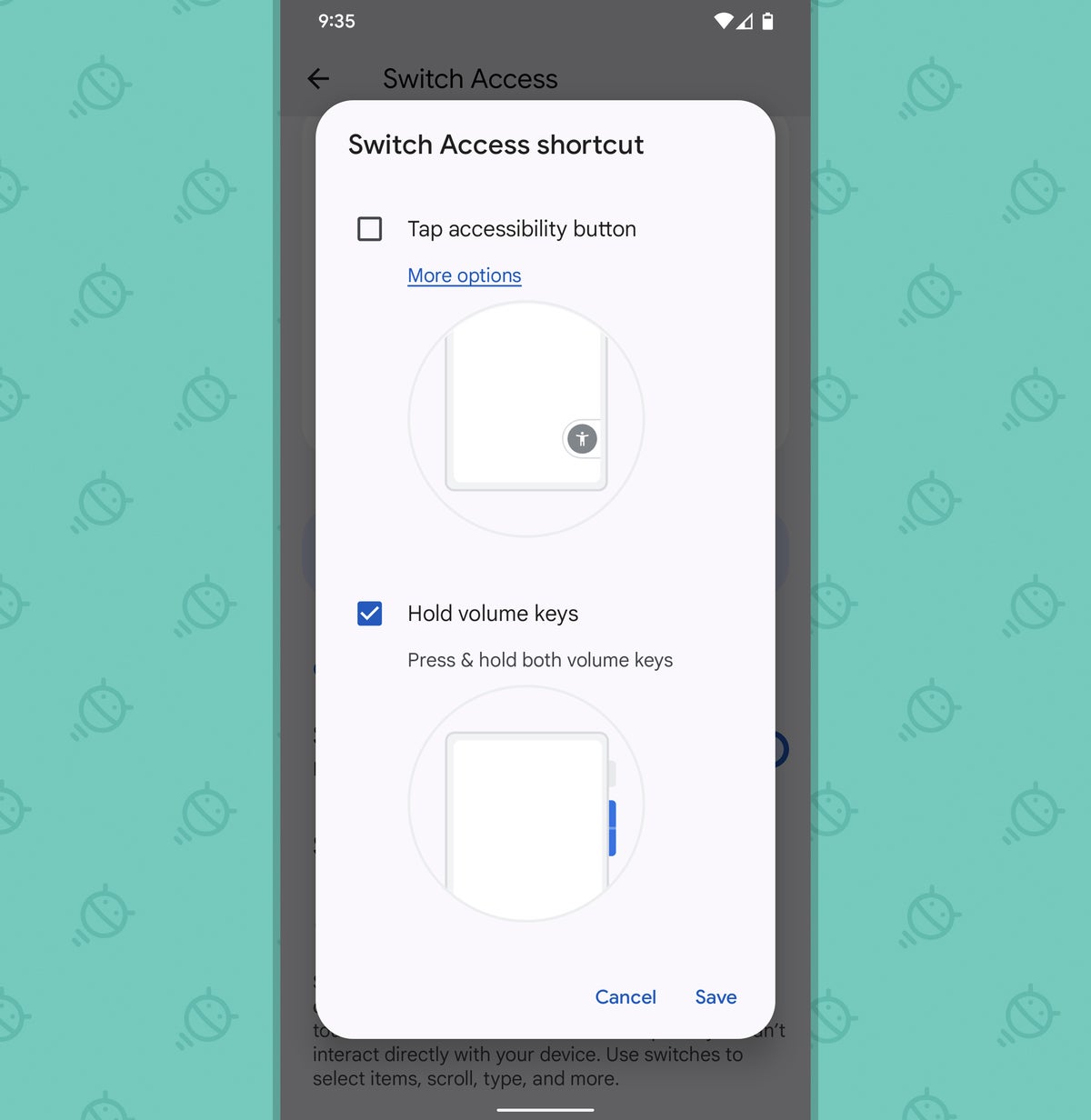Well, I'll be: Just when we thought we'd uncovered all there is to know about Google's almost-ready-for-prime-time Android 12 update, a futuristic new feature has snuck its way into the mix.
As spotted over the weekend, the latest Android 12 beta release includes an intriguing new capability that quite literally lets you control your phone with your eyes. A glance to the left, for instance, could take the place of the typical system-level Back gesture. A glance upward could open your notifications. And a coy-looking eyebrow raise could take you back to your home screen (as well as make anyone around you think you're the most awkward person alive).
The possibilities only keep going from there. You could teach your Android phone to open your Quick Settings panel when you open your mouth, even, or to open the app-switching Overview interface whenever you flash a winning grin. (Just be sure to avoid using the system whilst eating deli meat, as all of the chomping and salami-induced smiling could really make your phone go bananas.)
This is some seriously wild stuff, and it works almost shockingly well. Most shocking of all, though, may be the fact that Google hasn't so much as even mentioned the presence of this possibility in any public forum. It just kind of quietly showed up, with no real fanfare, announcement, or so much as a tiny hired monkey prancing around and clashing cymbals to alert us.
If you're using the latest Android 12 beta, though, you can try out the system for yourself this very second. And if you aren't, don't get yourself into too much of a tizzy. The feature will probably make its way to your phone once the Android 12 software is officially finished and ready to roll out — something all signs suggest should happen any week now and certainly within the next month.
Now, one quick side note before we dive in: This new face gesture system is technically part of Android's suite of accessibility services, and it's easy to see why. A system like this could be invaluable for anyone with a condition that keeps them from having full movement and fine control of their arms, hands, and fingers. But like so many Android accessibility options, it's every bit as impressive — and potentially even useful — for just about anyone.
So warm up your peepers and set yourself a mental bookmark. Whenever you're got Android 12 in front of you, here's all you've gotta do to find and activate the thing:
- Open up your system settings and head into the Accessibility section.
- Scroll down until you see the line labeled "Switch Access." Tap it. Tap it with gusto, damn it!
- Now tap the toggle next to the words "Use Switch Access" and follow the prompt to grant the system the permissions it needs in order to operate. (They may sound like a lot, but (a) they're clearly necessary for this manner of operation — and (b) this is a system-level, Google-made app we're talking about, so you aren't actually granting access to any kind of third-party entity, anyway. The prompt is just a formality that comes up anytime this manner of access is required.)
- Follow the steps to configure the system and its various face-oriented gestures. You can also get back to those same choices later by tapping the "Settings" option on the main "Switch Access" screen and then tapping "Camera Switch settings" on the screen that comes up.
However you go about it, you'll ultimately have six possible eye- and face-based gestures you can configure.
 JR
JR And you can configure any of 'em to handle just over a dozen different tasks.
 JR
JR The simplest thing to try is setting some of the gestures to control your basic system navigation — y'know, commands like going back a step, returning to your home screen, opening your system Overview interface, and maybe also opening your notifications and/or Quick Settings area.
The other thing I'd suggest is tapping the option on the main "Switch Access" settings screen to enable the "Switch access shortcut." That'll let you set the system up to be active and watching for your commands whenever you press and hold both volume keys down together and then to turn itself off with the next press of those buttons.
 JR
JR The visual gesture system burns through a fair amount of battery power, and it can also get pretty annoying if it's being activated when you aren't deliberately trying to use it (especially if you tend to raise your eyebrows a lot, you awkward, awkward weirdo). Having that shortcut enabled will give you a simple and unobtrusive way to flip the system on and off whenever you feel the urge.
So putting this all together, here's an example in which I never touch my screen and take only the following actions:
- Press and hold the volume-up and volume-down buttons together
- Look up
- Look toward the left
- Raise my eyebrows and keep them raised for a moment
- Smile
As a result of those steps, you'll see:
- The visual gesture system activate
- My notification panel open
- My notification panel close
- My system Overview area open, with the most recent process I had opened then getting selected
- My phone return to its home screen
- My wife roll her eyes at me, sigh, and leave the room (not pictured)
Ready for this?
 JR
JR Again, outside of the initial activation of the feature — via the volume-up and volume-down button pressing — that involved nothing other than subtle movements with my face. Pretty crazy, right?!
Long-time Android fans may note that this feature is vaguely similar to a "Smart Scroll" option Samsung used to include on its Galaxy devices. With that, the phone would attempt to use the angle at which you were holding the device to scroll through web pages and other long documents based on how much you were tilting either the phone itself or your plus-sized noggin at any given moment. That feature was never especially reliable, though, and it quietly disappeared somewhere around 2014.
With Android 12, it looks like the same basic concept is coming back with much more advanced and consistent technology behind it and a much more distinctive purpose in mind. Accessibility purposes aside, of course, it's tough to say how genuinely useful it'll be in the real world in any long-term sense. Maybe with a handful of extra action options, it could have some real potential for simplifying phone use whilst you exercise (think elliptical trainer or stationary bike) or read over Very Important Business Materials™ in bed.
If nothing else, though, it's a fun new trick to play around with and an impressive demonstration of what our current phone technology makes possible. And it's absolutely a feature worth keeping an eye on as it makes its way into the world and then continues to evolve from there.
Get six full days of advanced Android knowledge with my new Android Shortcut Supercourse. You'll learn tons of time-saving tricks for your phone!































































































